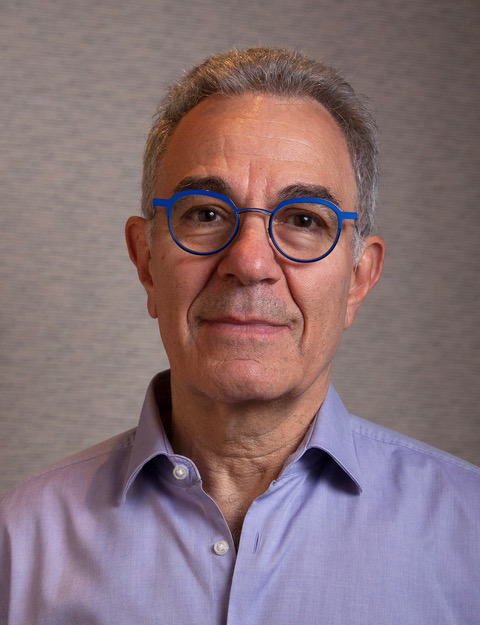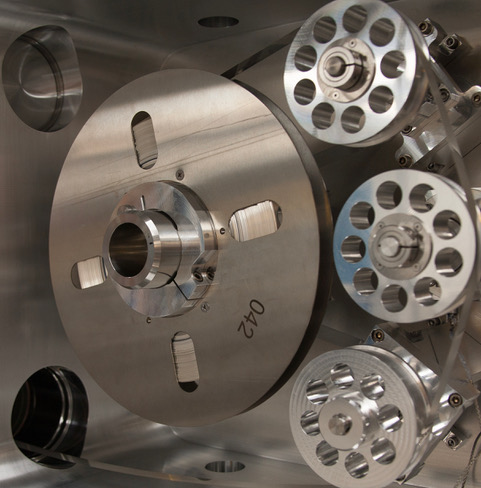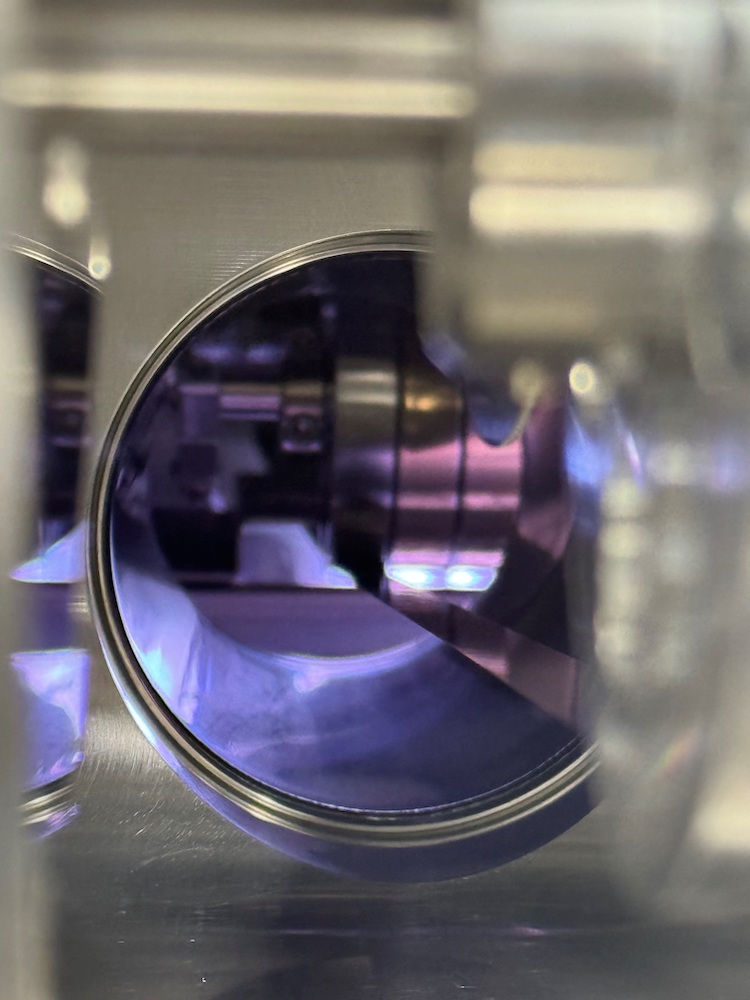HTSI – Not Your Grandfather’s Superconductor

Nature is many-splendored. Imagine a rotund little bird with blue, unkempt feathers, dots for eyes, and a charming little beak. The bird is grasping a branch near the top of a tall, breeze-tossed tree, and periodically emits a lilting series of notes that seize the human heart. Now imagine a throbbing flume of plasma as hot as the soul of a star, suspended in a toroidal chamber by a massive magnetic field that wraps and contains the thing like a panicked catcher’s mitt. That is, nature is both purpose-free art flung out by a Beatifying Big Bang, and an endlessly complex and purposeful machine – one whose components can be teased apart and reassembled to do our bidding.
Ray Karam is CEO and Founder of High Temperature Superconductors, Inc.(HTSI), an outfit on the threshold of meeting an objective that could move the world meaningfully forward on several fronts. The company’s paradigm-teasing magic happens in a largish lab/factory/office so anonymized I inadvertently drove past it. Twice. Today I’ll learn that HTSI isn’t rethinking the superconductor itself. They are enabling its ubiquity.
In a small office we’re joined by Ines Wyrsta,HTSI’s Director of Engineering. The conversation quickly exits the realm of the prosaic. At one point Ray utters the phrase “putting a sun in a box,” for instance. Superconducting at the moment can be said to principally concern a new mode of energy generation. Per Mother Nature’s typical mischief, the fusion reactor is an attempt to engineer an awkward marriage of opposites. You need to run a current through materials cooled to about minus 320 °F in order to produce a fire that burns at 160,000,000 °F. So the natural order is having the usual fun at our expense.
“The big thing for fusion applications,” Ines explains, “is not the high temperature; it’s the high current capacity. The high temperature superconductor can carry higher current densities than the other materials, and thus allows higher magnetic fields, which is necessary to confine a plasma.” At this, Ray leans forward.
“I would like to let the community know that what we’re doing is competing on the world stage,” he says. “What we’ve done in three years took the Russians 17, took the Japanese 20, and took two American companies – doing it with metal organic chemical vapor deposition – over 25 years. We’ve gone from an empty floor three years ago to a full functioning factory – the only factory like it in the U.S.” He pauses.
“Would you like a glass of water?”
Superconductor: the Hasty Electron’s Best Friend

It seems science has thrown all it can at the mechanics of superconductivity – which is saying a lot, given the weirdness and complexity of the physics. HTSI is on to the next step. “We’re not inventing a new superconductor,” Ines confirms. “That’s a proven technology with a known process. There are companies selling superconductors, but not very many, and not enough.” HTSI’s quest is to address the “not enough” part of the equation, and in so doing radically change the global energy model. And what is a superconductor?
In technical physics terms, a superconductor is a material which electrons can sprint through without getting hassled. In a normal conductor – your standard copper wire, for instance – the inherently energetic atomic framework that comprises the copper is naturally jittery, plowing into the electrons and making a mess of the footrace as they try to run through the wire. Each collision is a minutely wasteful diversion of the electrons’ energy into a useless scrap of dissipating heat – the copper wire gets warm and is said to be “resisting” the flow. This trivial-seeming leakage scales in a way we can ill-afford. It’s been estimated that around 20% of the world’s conveyed energy drifts off the transmission lines as useless heat.
A superconductor calms the caroming atoms so they are standing more or less still, and the electrons fly through without hindrance. This resistance-free current yields a secondary effect critical to a fusion reactor – a magnetic field. And what calms the jittery atoms enough to make this superconducting electron rush-hour possible? Freakish cold.
“Butte Montana in November?”
Keep going.
Running Hot and Cold

“High temperature superconducting wire can carry roughly three times what low temperature wire can carry, and in a fraction of the space,” Ray says, “and it doesn’t have to be at liquid helium temperature. It doesn’t have to be four kelvin.” Four Kelvin, by the way, is very, very cold. Interstellar space cold. HTSI’s High Temperature Superconductor is by contrast … not as cold. But neither should it invoke an image of a piña colada-sipping tourist on a Club Med beach.
High temperature superconducting happens at a balmy minus 320 °F,whereas Low temperature superconducting happens at the chillier minus 460 °F. Either of these temperatures will instantaneously turn a human being into a solid-state ice statue wearing a surprised expression. But that “higher” temperature eases somewhat the migraine-inducing project of making superconductivity a broadly practical solution. The coolant (nitrogen) is less expensive, more available, and greener. Earth’s atmosphere is 78% nitrogen, after all.
And the High temperature superconductors’ current carrying capacity makes them terrific at generating powerful magnetic fields, the kind needed to suspend a 160,000,000 °F blob of plasma in a tokamak (a toroidal chamber with magnetic coils). The plasma is mimicking the center of the sun, fusing – not splitting – atoms at necessarily tremendous temperatures. The superconducting magnetic field keeps the plasma politely contained. You don’t want the sun rising six feet away.
“The sun generates a ton of heat,” Ray understates. “Basically, you fire this thing up and you hold the plasma in place with these powerful magnets made out of high temperature superconducting wire. You only have to pump a fraction of current into it to keep the plasma going, but you get a bunch more energy out of it from heat. That turns a turbine and creates electricity.” …a turbine. You mean – ? “Yes,” Ray says with a knowing smile. “At the end of the day, you’re boiling water.”
Manufacturing Tomorrow
To actualize a new epoch of broad practical use for superconductivity – particularly in the hope-springs-eternal field of fusion energy – the thorny challenge now is one of manufacturing. This may seem less grandiose and mind-bending than the inaugural physics that led to superconductivity in the first place; but the fabrication challenges are no less exotic, and require engineering exactitude at both the nano and human scale, which would seem to put Ines right in the middle of the riddle.
“What we want is to make high temperature superconducting wire cheaper and at higher volume, and we want to produce it domestically,” she says. “HTSI makes better tools that can lead to faster throughput, and wire that is tailored to each application.” Copious and inexpensive superconducting wire will move the world discernibly forward, and HTSI is on the cusp of changing the game.
“From a throughput perspective,” Ray says, “once in production with our 100-meter-per-hour line, we’ll build a line that is five times faster than anyone else. So as we start producing at 100 meters per hour, within a short period of time the rest of the world’s manufacturers will need five assembly lines to keep up with our one.”
Ray leads me downstairs to the “factory,” a warren of glassed-in rooms and highly polished, roaring machines, everyone wearing the cleanroom bunny suits known to fans of NASA space probe documentaries. He opens the exit door and sunlight pours in. The operation looks expensive, I mention. “We’re looking for another $7 to $10 million to finish,” he says in a nod to eavesdropping prospective investors. “That gets us into production.”
In the parking lot I glance up at our familiar ball of fire – one of the mysteriously life-giving lamps hurriedly hung about the place by the curiously generous Big Bang. HTSI wants to harness a sliver of that stuff, tame it with magnets and restart the world. Here comes the sun.
High Temperature Superconductors, Inc. (HTSI) presents a unique investment opportunity in the advancement of superconducting wire technology production in the U.S. With notable achievements including a DOE/ARPA-E supported $5M grant to increase Pulsed Laser Deposition (PLD) throughput, 25% higher throughput with wider tape compared to industry standards, and DOE funding to improve uniformity. HTSI in conjunction with the National Magnetics Laboratory in Tallahassee, Fl is pioneering superior customization and unrivaled coatings in the field. HTSI is committed to increasing domestic availability of commercially scalable HTS tape, offering higher quality at a lower cost. As the sole U.S. manufacturer of PLD technology, the company holds a strategic position in driving innovation and reshaping the clean energy landscape. CTA: For further details on this investment opportunity and HTSI’s innovative achievements, contact John Kermath at J.Kermath_C@hitsuperconductors.com





